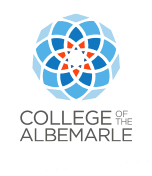Accessibility Services: High School Vs. Postsecondary
Learn the major differences between high school and postsecondary accessibility services.
| Topic | High School | Post Secondary |
|---|---|---|
| Applicable Laws | Individuals with Disabilities Education Act (IDEA) Section 504, Rehabilitation Act | Americans With Disability Act (ADA) Section 504, Rehabilitation Act |
| Required Documentation | Individualized Education Program (IEP) | Varies depending upon the disability and must include testing documentation |
| School provides evaluation at no cost to student | Student must provide the evaluation at his/her own expense | |
| School retests over time | Student provides retesting | |
| Student Role | Student is identified by school | Student self-identifies to Special Populations |
| Populations | School sets up accommodations | Student is responsible for securing accommodations |
| Parental Role | Access to student records | No access to student records without student’s written consent |
| Participation in accommodations | Student requests accommodations | |
| Mandatory involvement | Student is self-advocate* | |
| Instructors | Modification of curriculum | Not required to modify |
| Use of multi-sensory approach | Not required. Lecture is predominant | |
| Weekly testing, mid-term, final and graded assignments | May test once or twice with few assignments | |
| Attendance taken and reported | Attendance often not taken but student can be dropped after missing 10 percent (one class) | |
| Grades | Grades modified based on curriculum | Grades reflect the quality of work submitted |
| Conduct | Disruptive conduct may be accepted | Students who are disruptive and unable to abide by the institution’s Code of Conduct are deemed “not qualified” and can be dismissed |
| Most Important Differences in Summary | IDEA is about success | ADA is about access |
| High School is mandatory and free | Postsecondary is voluntary and expensive |
A Word About the ADA
The ADA extends civil rights protection to persons with disabilities. A “person with a disability” is anyone with a physical or mental impairment that substantially limits one or more major life activities.
Under Section 504 of the Rehabilitation Act of 1973 (public institutions are covered under Title II), students with documented disabilities may request accommodations that will enable them to participate in postsecondary education programs. A “qualified person with a disability” is defined as one who meets the requisite academic and technical standards required for admission or participation in the postsecondary institution’s programs.
Institutions are expected to give “reasonable accommodations.” Among the accommodations which postsecondary institutions can make are:
- Removal of architectural barriers
- Interpreters
- Note takers
- Assistive technology
- Extra time on tests and assignments (time and a half in most cases)
- Tape recorders
The emphasis of the ADA is on accessibility for those who wish to pursue education at the postsecondary level. There is no obligation on the part of a college to make fundamental changes in its courses for students with disabilities.
*Students with disabilities who complete high school will enter the workforce or a postsecondary educational environment. Having attained the age of legal majority, they’ll be expected to exhibit self-advocacy and to communicate their own needs for reasonable accommodations in work or educational environments.


